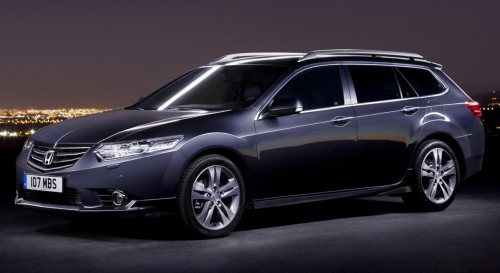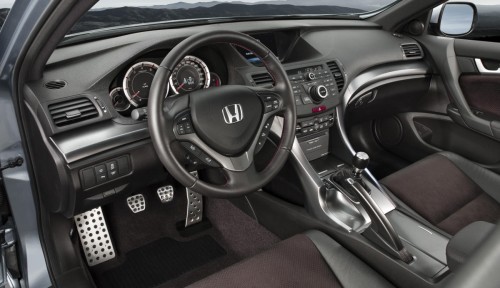European Accord

Honda will be debuting its facelifted European Accord sedan and Tourer models at the Geneva Motor Show. Both forms will feature a number of minor changes – besides revised exterior styling and detail changes inside the car, engines have been tweaked to offer better emissions and economy, and ride and handling aspects have been improved.
Exterior revisions include small but noticeable changes to the headlights – with the previously amber indicators now in a clear finish – and bumpers. Bi-xenon units, featuring Active Cornering Lights, come as standard on higher-end variants of the form.
The bi-xenon-equipped cars will also feature a High Beam Support system. A CMOS camera fitted to the windscreen in the area of the rear view mirror helps detects oncoming headlights or taillights of a vehicle in front and automatically dips the headlights onto their normal setting if they are on high-beam.
Meanwhile, the grille has been subtly remodelled, and the cooling duct and fog light recesses on all models have been re-profiled, tapered to offer a more aggressive line.

On the sedan, the rear lamps have been subtly enhanced, and a light chrome garnish gets pasted above the rear licence plate; on what’s called the Type S grade models, this garnish is finished in dark chrome. Three new colours join the lineup, these being Alabaster Silver, Graphite Lustre and Celestial Blue Pearl.
Inside, the changes are again subtle, with new seat materials and door linings leading the way. The Type S models get half leather seats in a dark grey finish and black headlining to further distinguish them. Elsewhere, the metal-look finish interior trim now comes in a darker hue, and the footwells are now illuminated blue when the headlights are on, with Type S’ being red.
Mechanically, low friction wheel bearings and reduced rolling resistance tyres have been introduced, as have underbody aerodynamic aids, including a larger front air dam, underfloor and a rear subframe cover.

Internal revisions to reduce frictional losses are the order of the day for the automatic transmission (which also features re-optimised ratios) and the 150 hp 2.2 litre i-DTEC diesel engine, which of course brings about improved fuel economy and emissions.
Improvements are also to be had with NVH levels, with the adoption of higher density foam in the under bonnet/dashboard areas and revised underfloor noise insulation among the suite of noise reduction techniques.
As for ride and handling, the dual-mode dampers have been refined to offer improvement in both high speed stability for highway driving and a significant improvement in ride quality, even over poor road surfaces.
No comments:
Post a Comment